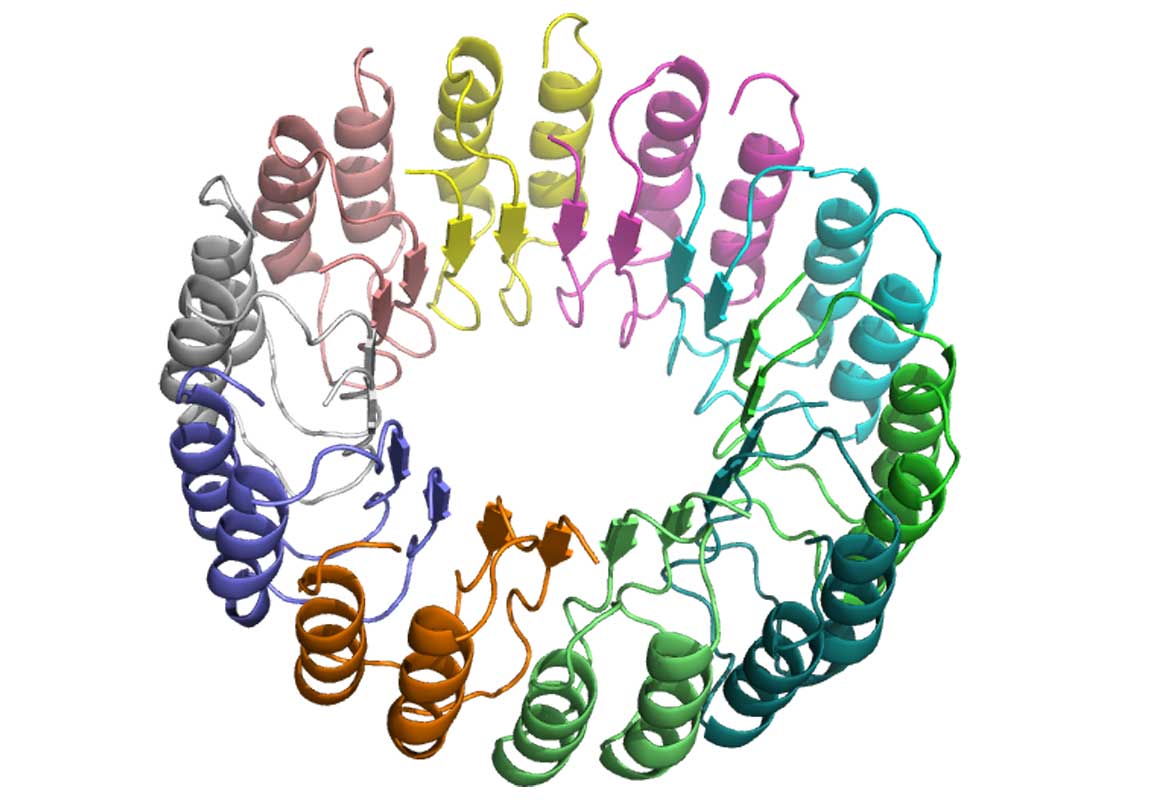
Computational design of a leucine-rich repeat protein with a predefined geometry
Structure-based protein design offers a possibility of optimizing the overall shape of engineered binding scaffolds to match their targets better. We developed a computational approach for the structure-based design of repeat proteins that allows for adjustment of geometrical features like length, curvature, and helical twist. By combining sequence optimization of existing repeats and de novo design of capping structures, we designed leucine-rich repeats (LRRs) from the ribonuclease inhibitor (RI) family that assemble into structures with a predefined geometry. The repeat proteins were built from self-compatible LRRs that are designed to interact to form highly curved and planar assemblies. We validated the geometrical design approach by engineering a ring structure constructed from 10 self-compatible repeats. Protein design can also be used to increase our structural understanding of repeat proteins. We use our design constructs to demonstrate that buried Cys play a central role for stability and folding cooperativity in RI-type LRR proteins. The computational procedure presented here may be used to develop repeat proteins with various geometrical shapes for applications where greater control of the interface geometry is desired.
